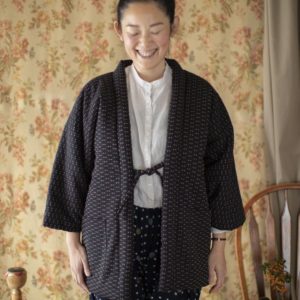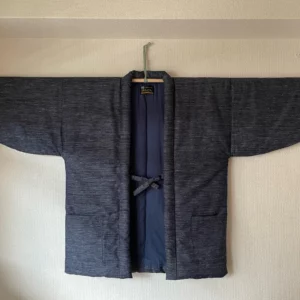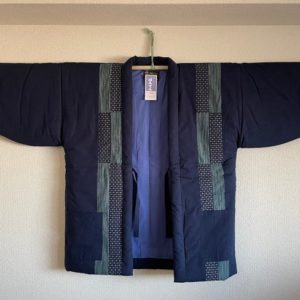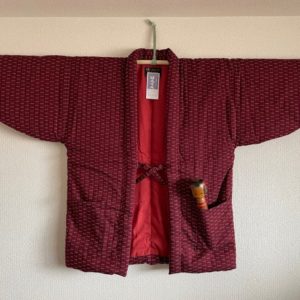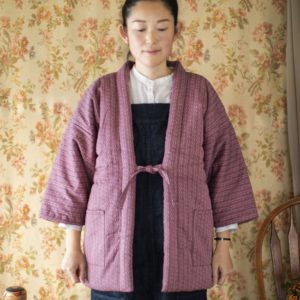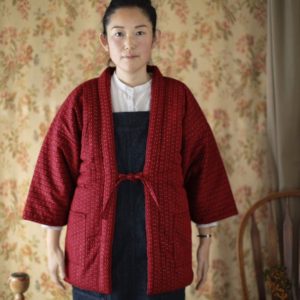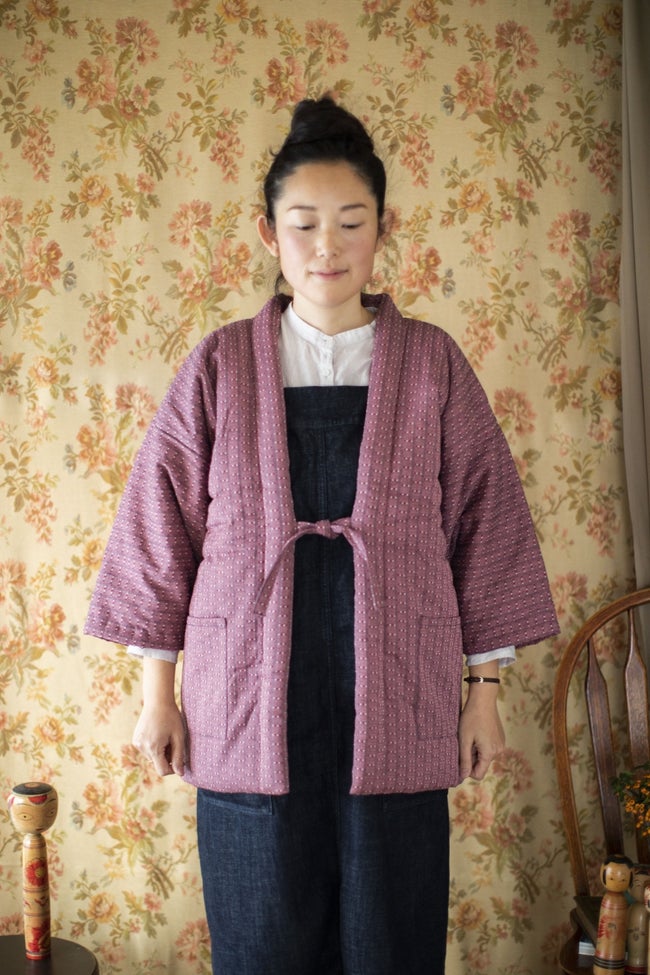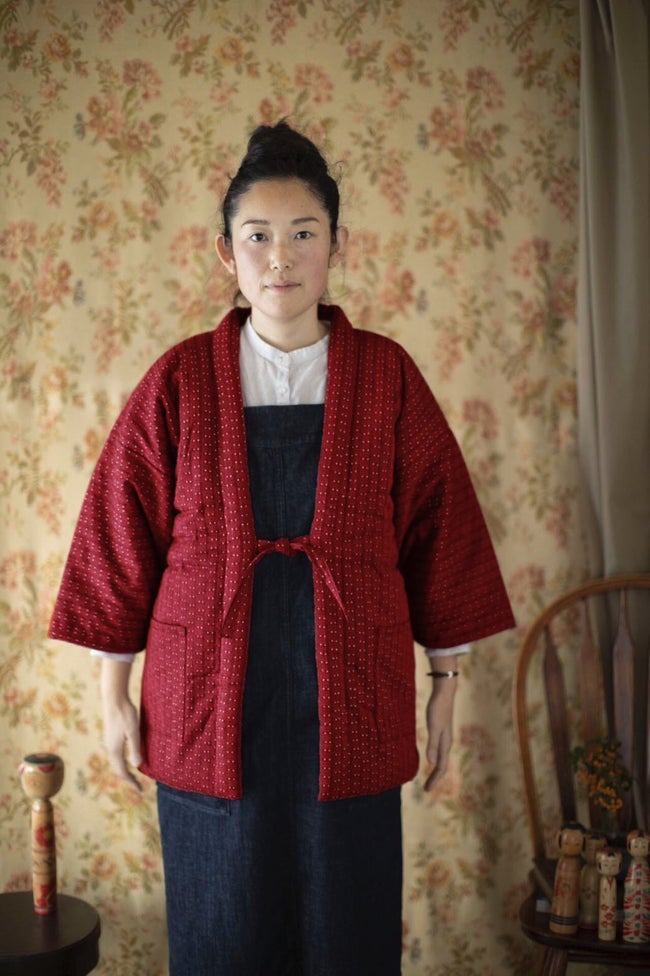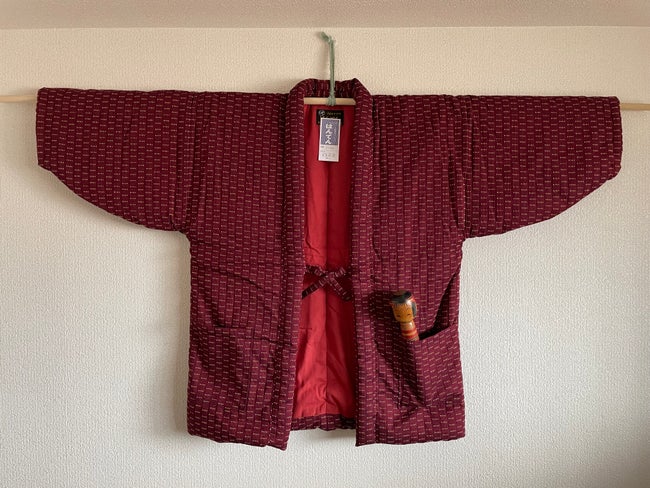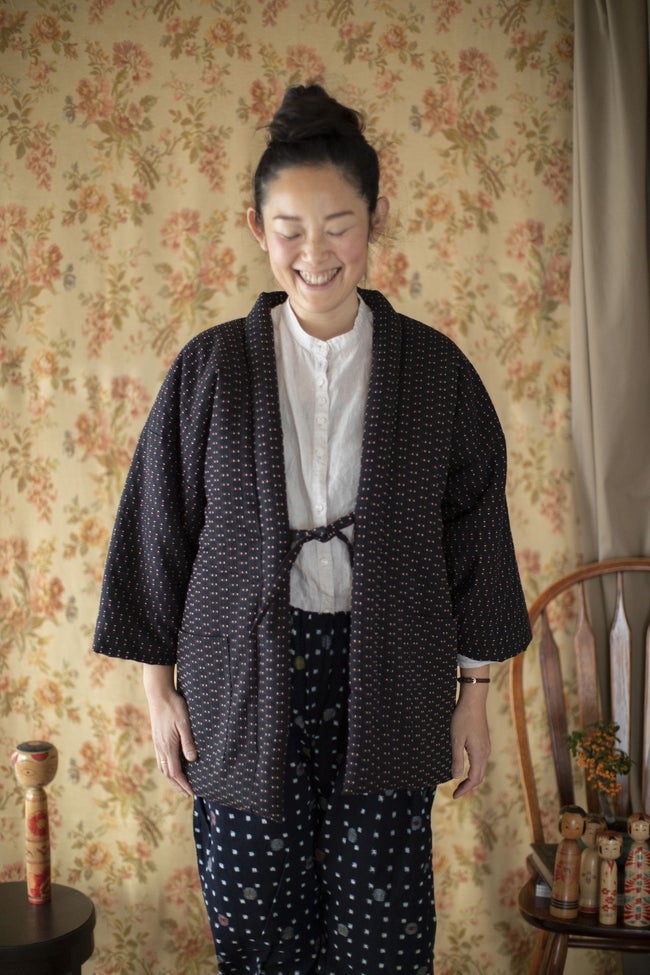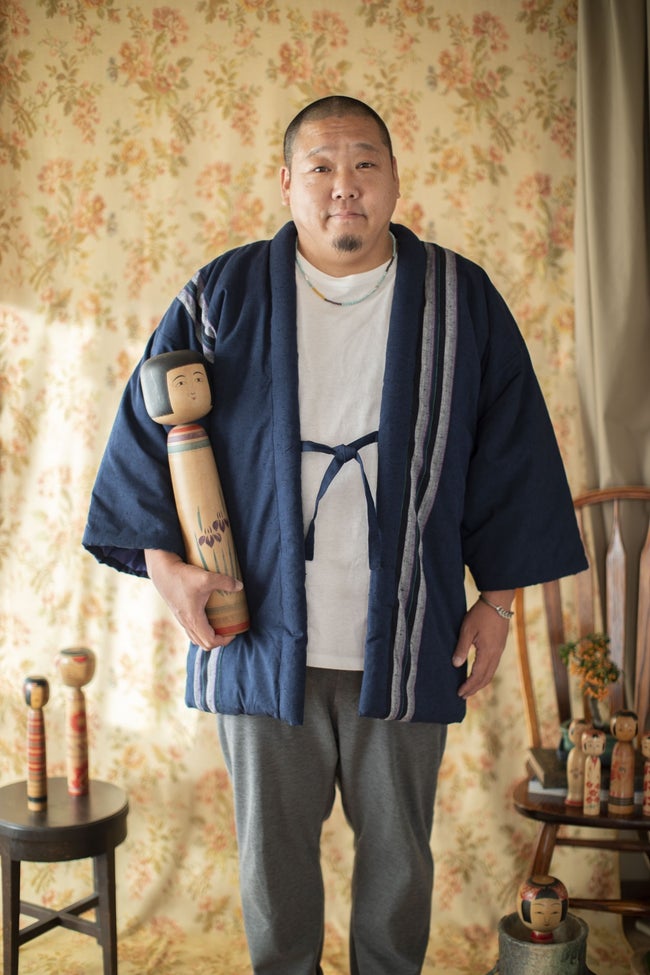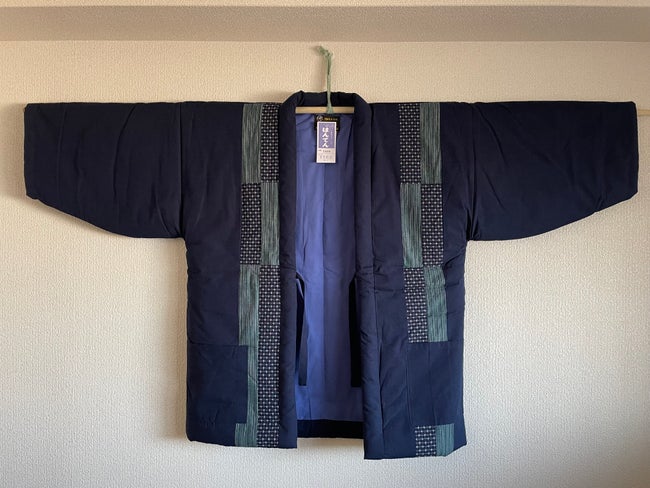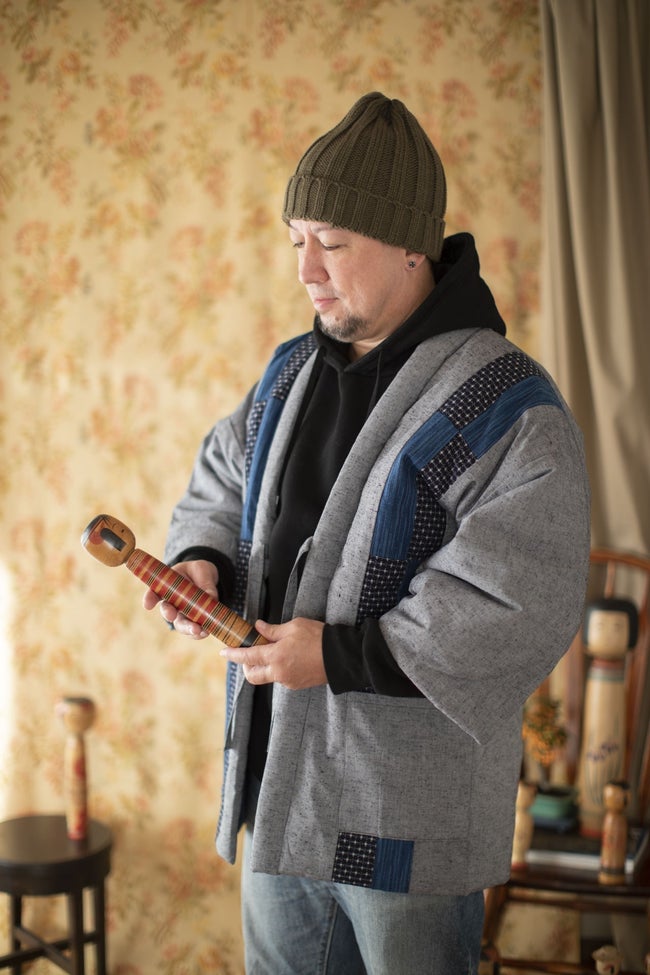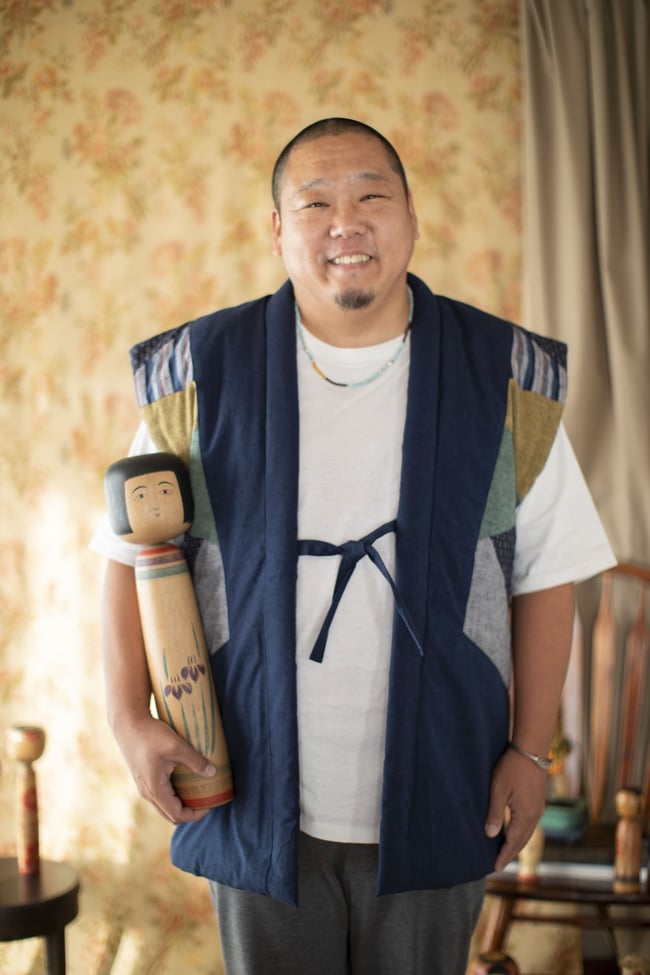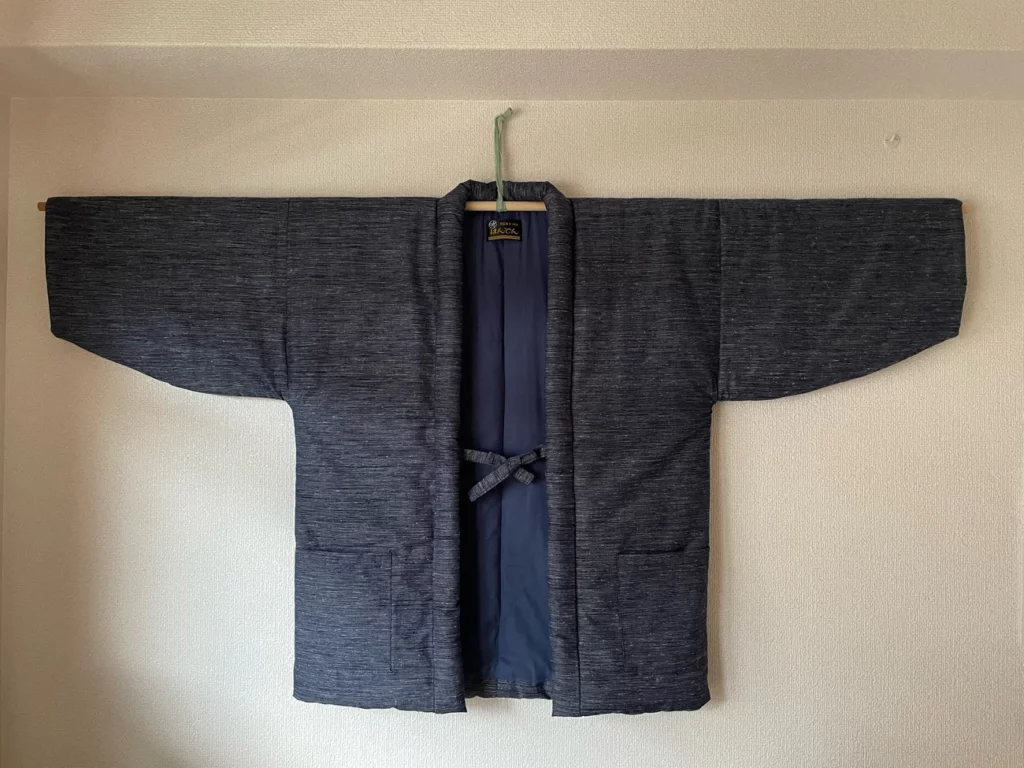Japan is known for many unique and creative items and practices. Their elegant but functional clothing, which has been adored and worn for centuries, is one of the most intriguing things. Hence, it’s no surprise that traditional pieces that were popular back in the day are now popular again all over the globe. One such distinctive traditional Japanese piece is the Hanten jacket, which is deemed a must-have today!
What is a Hanten Jacket?
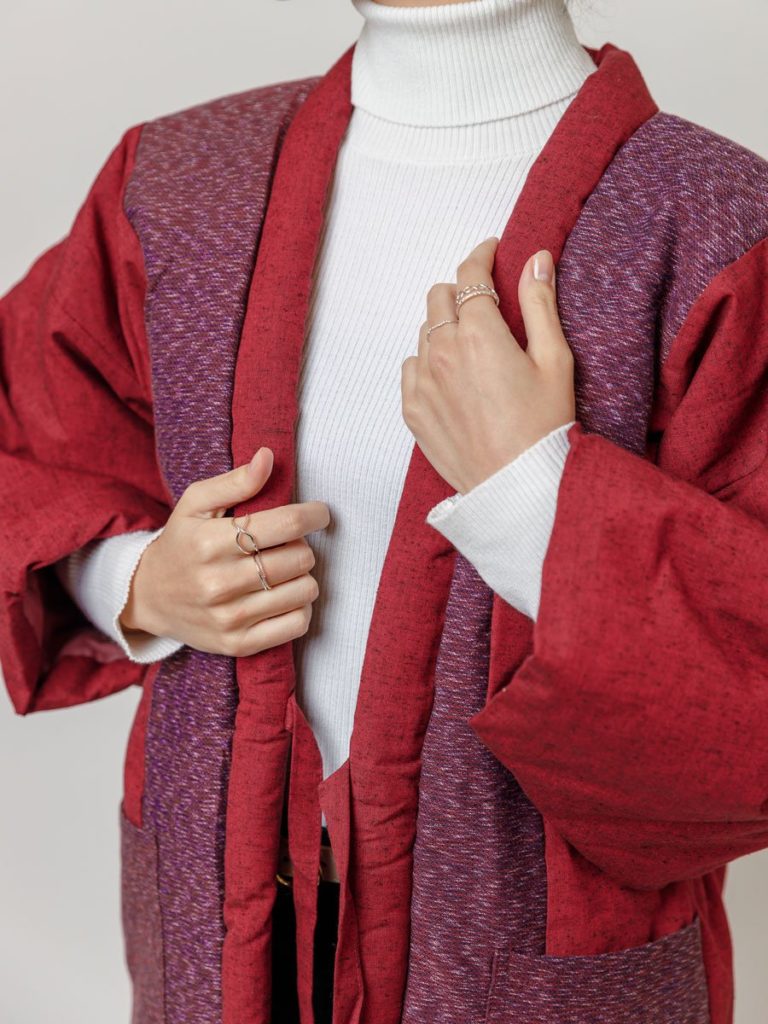
The Hanten (“半天” or “半纏”) is a Wafuku (or traditional Japanese clothing) with warm padding, fitted collar, and cotton lining normally worn during winter or cold seasons. Hanten Jackets are shaped like a Haori (Japanese half-coat). Thus, its Japanese characters refer to its jacket look — the character 半 “Han” means “half” which refers to the length of the sleeves, and 纏 “Ten” which describes how it is something to be worn by people. They can be worn over garments such as kimonos, shirts, turtlenecks, or even pyjamas.
Although traditionally worn by noblemen, the Hanten Jackets eventually became an everyday garment of the common man during the Edo Period (1603-1867). Today, this winter coat is designed for men, women, and children, with many even using it as a replacement for cardigans or jackets. However, despite its traditional use for winter seasons, it is also used at night, during festivals, or for various occasions given its lightweight, warm, and breathable material.
What is Hanten Made of?
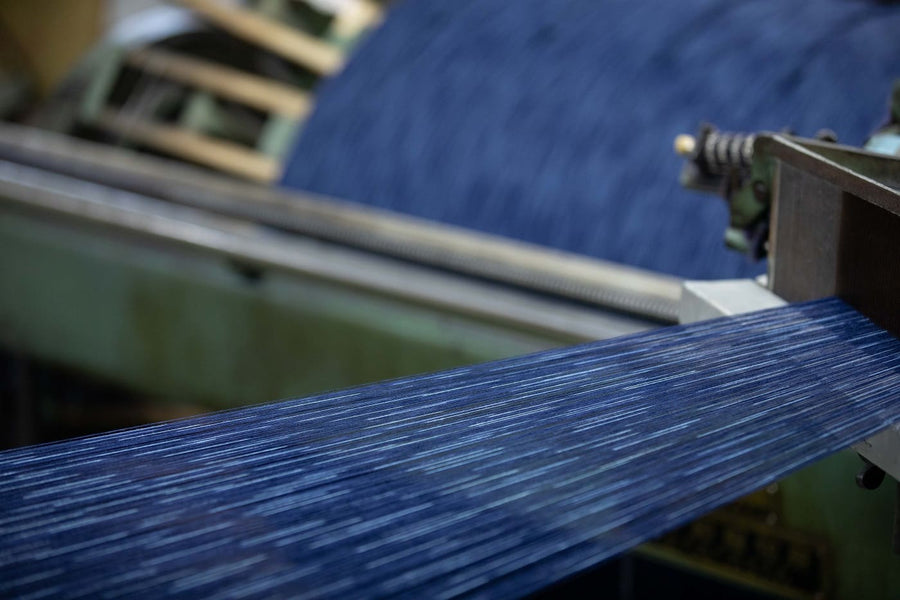
For a Hanten to be ready to wear, many stages must be achieved. There’s the designing phase, the patterning, weaving, binding, and the dyeing operations that follow.
The material used to make the jacket is essential to these methods. Cotton, synthetics, and silk are the most popular textiles for Hanten jackets.
Cotton

The best Hanten winter coats are said to be made using Kurume Kasuri cotton, a type of woven cotton that is dyed with indigo. It is produced uniquely in Kurume City, Fukuoka, and a majority of the production is done by hand.
The exterior of quality Hanten uses 100% Kurume Kasuri cotton for its lining and uses either 100% cotton or a mix of cotton with polyester. This makes the padding lighter and longer-lasting while still providing warmth.
Hanten coats made from cotton are ideal for cold weather, and they are noticeably softer to the touch. However, because creating Hanten jackets with cotton is more complicated, it is more expensive compared to one that is made of mixed synthetic material.
Synthetic Fabric
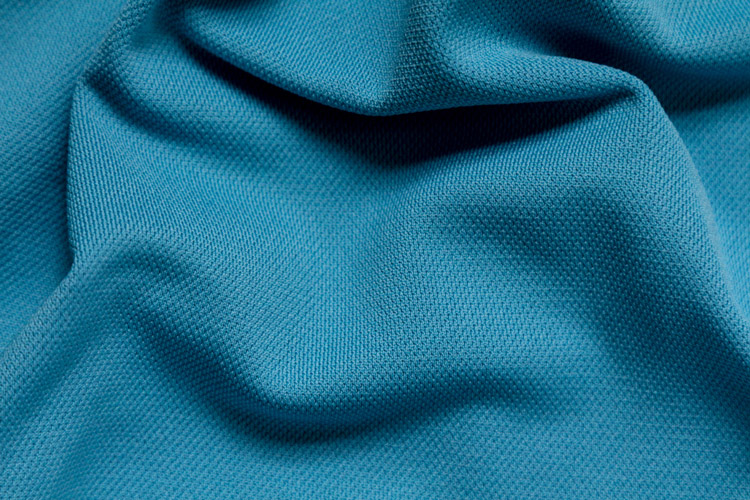
Hanten jackets can also be made from synthetic fabrics such as polyester or modal. Normally, Hantens made with synthetic fabrics are combined with cotton — typically 70% cotton and 30% polyester, depending on the manufacturer.
Although it is of less quality material compared to pure cotton, it is much more affordable. Because of the material, as well, difficult patterns, symbols, and designs are more doable; hence, Hanten jackets made from polyester come in much more striking pattern designs.
So, if you’re looking for a Hanten coat that is printed or embroidered with special and complicated designs, a winter coat with synthetic fabric is the best choice.
Silk

High-end Hantens made of superior silk are quite uncommon, although they do exist. Historically, silk has been linked with affluence, but Hanten jackets today, are more often worn by the average consumer, are far more difficult to come by and hence more costly.
With the rise in popularity of the Hanten jackets, it is expected that there’s a demand for a variety of designs. The three most popular types of Hantens are — the short sleeve or Chachanko, the mid-length sleeve or Yakko, and the long sleeve.
Short-Sleeve or Sleeveless (袖なし型)

The Hanten short sleeves, also known as Chachanko (ちゃんちゃんこ), are often worn by children because they allow the hands to become dirty but the sleeves stay reasonably clean. Nevertheless, sleeveless or vest Chachankos remain popular among Japanese adults, particularly those of prior generations, since they are reminiscent of old times.
They are commonly used when needing extra warmth but without the hassle of rolling up the sleeves every time. They are also worn by folks who need to carry out tasks that necessitate the hands (e.g., cooking, gardening, or crafting).
Mid-Length Sleeve (半袖)

The popular half-sleeved Hanten is called: Yakko. It is popular because it combines the warmth of long sleeves with the ease of a sleeveless or short-sleeved design.
Long Sleeve (長袖)

Because of its long and comfy sleeves, long sleeve Hanten jackets are often worn when it’s really cold outside! This winter garment gives the feeling of being wrapped in a warm blanket, without the weight and length.
However, they are noticeably thicker than other versions, and as a result, they are not worn as workwear. Instead, they are usually worn for fashion or comfort, relaxing on the sofa comes to mind.
Japanese Hanten Designs Before and Now

Having originated in Edo Japan and going through a revival, we examine how the original style of Hanten has evolved to become a modern favourite. Is there a significant difference between the original and today’s designs, or are the lines blurred?
Traditionally, Hantens were simple, with fabrics woven deliberately and intricately to show a sense of depth throughout the fabric. They were normally designed with nature or religion in mind. Symbols related to Japanese myth, culture, and concepts in Buddhism can be seen, and depictions of Chinese and Japanese flora and fauna are also common.
For instance, designs of cranes, cherry blossoms, pine trees, plum blossoms, and turtles would be used. This is because these symbols were believed to protect them against harm. Moreover, most of the Hantens were adorned with the family crest of the clan of the nobles during the Edo Period.
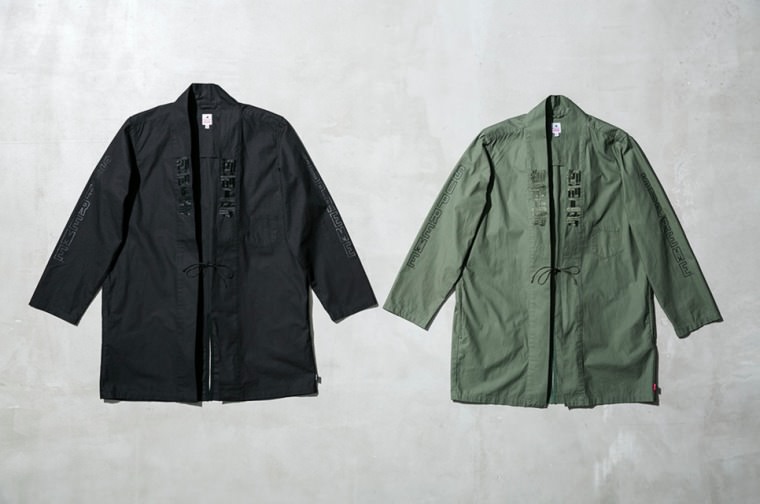
Although traditional designs are still evident in modern versions, there have been fusions of the old and the new within contemporary designs. There are hybrid designs with added hoodies and open-front style that make it easy to wear.
There are also coats with popular design brands imprinted on the jacket itself, such as this one from Sasquatchfabrix x Supreme where the bold and iconic logo and fishtail back are included. Interestingly, there have also been fusions of the traditional kimono with the Hanten, such as this one from Master Craftsmanship.
Japanese Hanten vs Other Similar Japanese Styles
Aside from the Hanten, there are also numerous other Japanese clothing that may seem similar to the Hanten coats. After all, there is a lot of overlap with these clothes.
Haori
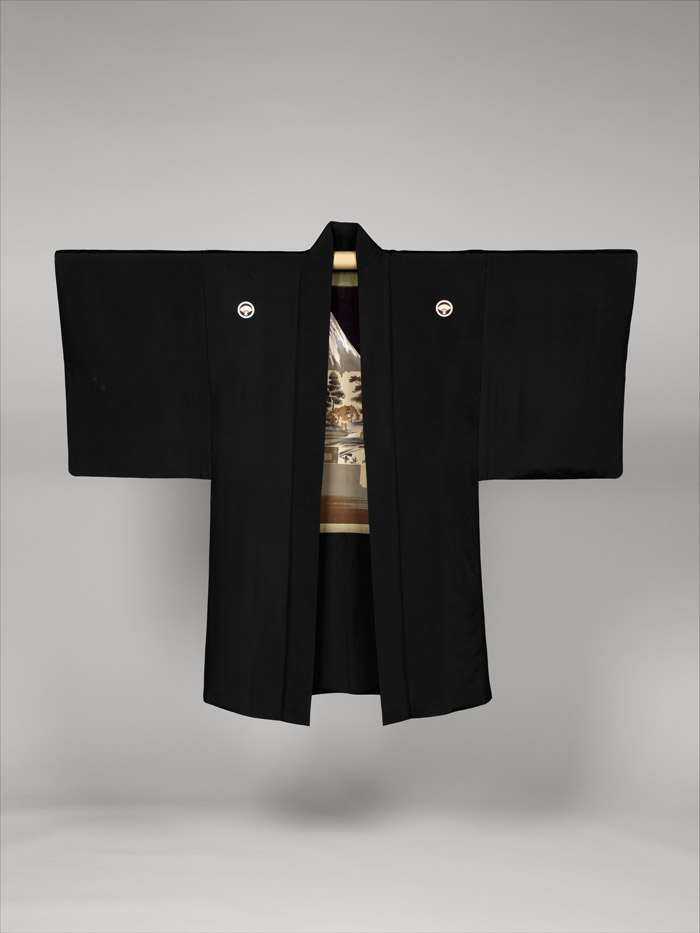
The Haori is very similar to the Hanten jacket as it can also be worn over a kimono, and it is usually hip- or thigh-length. It looks similar to a shortened kimono with no Okumi or overlapping front panels, and it has thinner collars sewn with the addition of two thin and triangular panels at both side seams.
While Hanten Jackets were freely accessible to everyone throughout the Edo period, the wearing of Haori was reserved for particular social strata. Depending on the fabric and structure, a Haori was highly formal. Hidden costly linings are still visible now in Haori worn today because Edo officials were hesitant of overt displays of wealth.
Happi

The Happi is normally dyed with one color only; emblems and certain patterns are the designs from the seemingly monotonous happi. Often, Happi are adorned with large Kanji or group symbols on the back to label organizations, companies, or events.
Historically, Happi were worn as a kind of uniform, but presently, they are worn during festivals in Japan and by some workers such as farmers. This traditional Japanese clothing has a similar cut to a Hanten, but it normally has a more simple design meant to be very casual.
Hantens were more often used as a warm coat, whereas Happis were traditionally worn as uniforms.
Tanzen
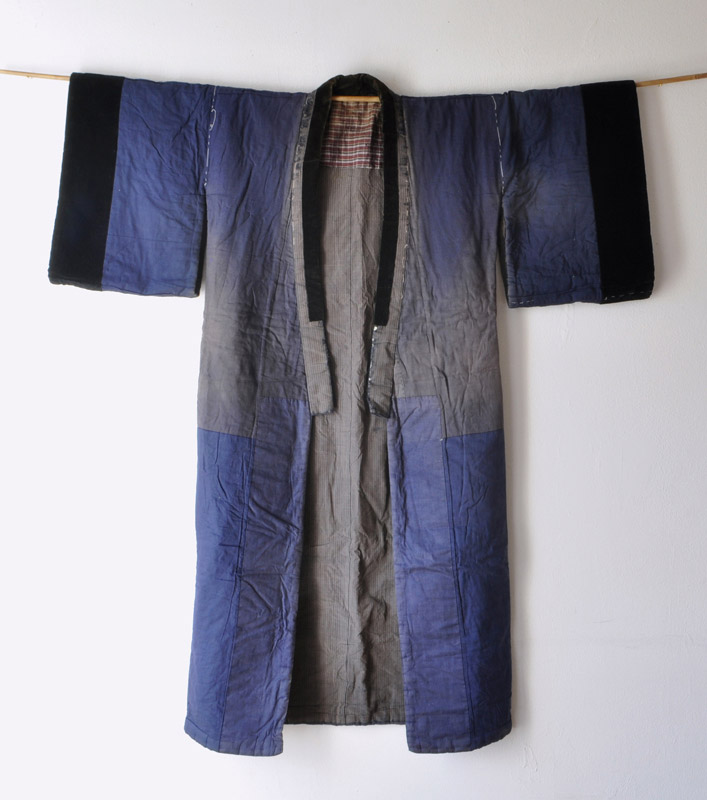
The Tanzen is also a padded garment worn during winter or colder seasons in the Northern parts of Japan, such as Tohoku or Hokkaido.
Unlike the Hanten which normally stops mid-thigh and is fastened with front strings or is worn open, the Tanzen are full-length outer robes worn left over right, similar to a Kimono or a Yukata, and fastened with an obi (sash).
Noragi
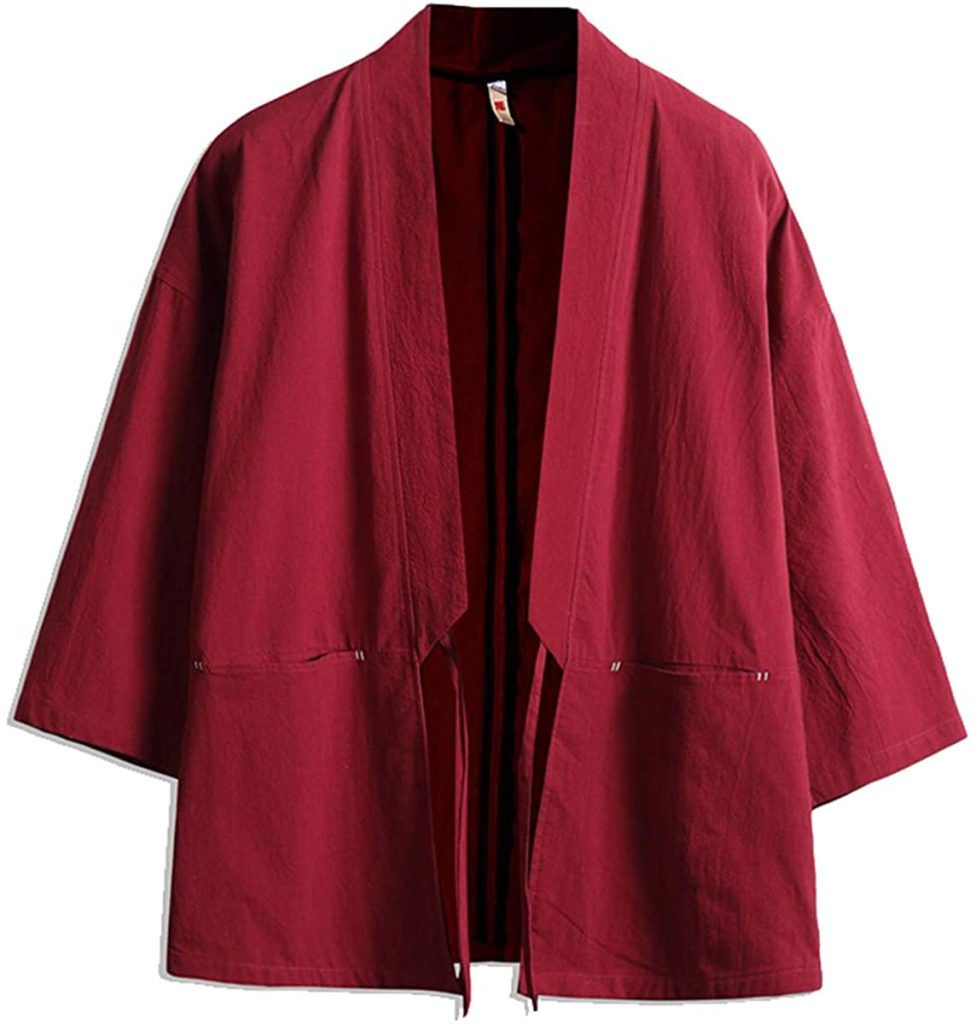
The Noragi coat usually comes down to the hip or slightly above the high. Unlike the Haori and the Hanten, this clothing does not need to be worn over a kimono and has simple and informal designs on it. Worn as casual workwear by those who work in the fields or are engaged in physical forms of labor.
Historically and currently, the Japanese Hanten remains ever popular. Because of its large and comfortable fit that allows for effortless mobility that is reminiscent of other traditional Japanese clothes, this is no surprise. Traditional and contemporary elements are well combined in this soft and beautiful piece. Because of this, the Hanten coat is the ideal option for both style and comfort, whether you’re studying, relaxing, or out and about.



































